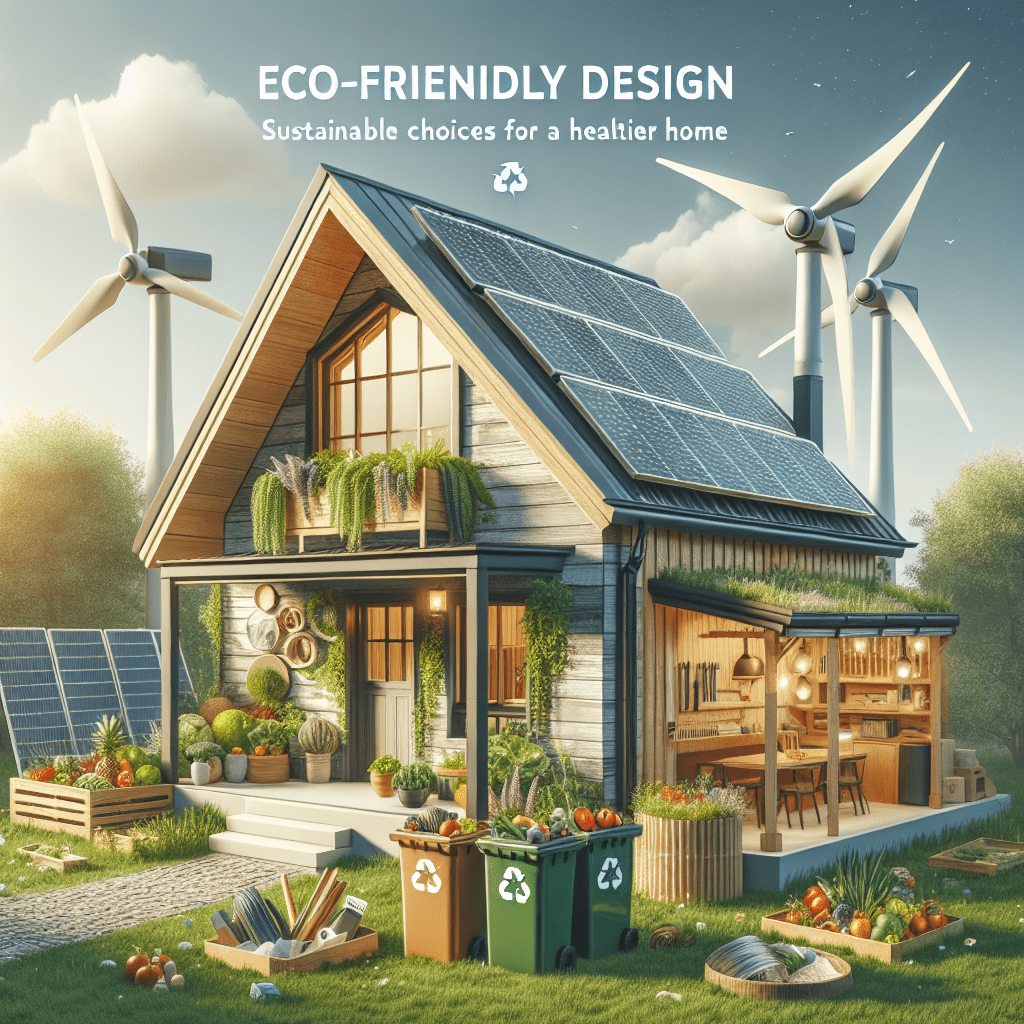As more and more people become aware of the importance of sustainability and eco-friendliness, the demand for eco-friendly design in homes is on the rise. Creating a healthier living environment for yourself and your family while also reducing your carbon footprint is not only beneficial for the planet but also for your own well-being. In this article, we will discuss some sustainable choices you can make to design an eco-friendly home.
Benefits of Eco-Friendly Design
There are numerous benefits to incorporating eco-friendly design into your home. Not only does it help reduce your impact on the environment, but it can also save you money in the long run. Energy-efficient appliances and fixtures can lower your utility bills, while sustainable materials can reduce maintenance costs. Additionally, eco-friendly design can improve indoor air quality, leading to better health for you and your family.
Choosing Sustainable Materials
When designing an eco-friendly home, it is important to choose sustainable materials that have minimal impact on the environment. This includes materials that are renewable, recycled, or locally sourced. Bamboo, cork, and reclaimed wood are popular choices for flooring, while recycled glass and metal can be used for countertops and backsplashes. When selecting furniture, look for pieces made from reclaimed or FSC-certified wood.
Energy-Efficient Appliances and Fixtures
One of the easiest ways to make your home more eco-friendly is by using energy-efficient appliances and fixtures. Look for appliances with the Energy Star label, which are designed to consume less energy and water. LED light bulbs are also a great choice for reducing energy consumption. Additionally, installing low-flow faucets and showerheads can help conserve water.
Natural Lighting and Ventilation
Maximizing natural lighting and ventilation in your home can help reduce the need for artificial lighting and air conditioning. Install skylights and large windows to let in natural light, and use window treatments that allow for airflow. Consider landscaping around your home to provide shade in the summer and allow sunlight in during the winter. This can help regulate indoor temperatures and reduce energy usage.
Conclusion
Designing an eco-friendly home is not only beneficial for the environment but also for your own well-being. By incorporating sustainable materials, energy-efficient appliances, and natural lighting and ventilation, you can create a healthier living environment for yourself and your family while also reducing your carbon footprint. Making small changes to your home design can have a big impact on your quality of life and the planet.
FAQs
Q: Are eco-friendly materials more expensive?
A: While some eco-friendly materials may have a higher upfront cost, they can save you money in the long run through energy savings and reduced maintenance.
Q: How can I make my home more energy efficient?
A: You can make your home more energy efficient by using energy-efficient appliances, sealing leaks, and maximizing natural lighting and ventilation.
TIP: Consider investing in a smart thermostat to help regulate your home’s temperature and save energy.
#EcoFriendly #Design #Sustainable #Choices #Healthier #Home
